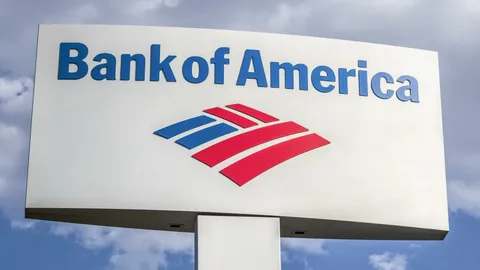Insurance banking, also known as bancassurance, refers to the integration of banking and insurance services under one umbrella. The top insurance banks in the USA consistently receive high ratings, reflecting their excellent risk management practices, sound financial policies, and robust capital and liquidity positions.
The primary purpose of insurance banking is to provide customers with a convenient and comprehensive financial solution. By combining banking and insurance services, customers can access a wide range of products, such as savings accounts, loans, life insurance, property insurance, and investment plans, all under one roof.
Insurance banking differs from traditional banking in several ways. Traditional banks primarily focus on lending, deposit-taking, and other financial services, while insurance companies specialize in risk management and protection through various insurance products. Insurance banking bridges this gap by allowing banks to cross-sell insurance products to their existing customer base, leveraging their established relationships and trust.
Moreover, insurance banking offers several advantages for both banks and insurance companies. Banks can diversify their revenue streams by earning commissions from selling insurance products, while insurance companies gain access to a wider customer base through the banks’ extensive branch networks and customer relationships.
Top Insurance Banks in the USA
The insurance banking industry in the United States is highly competitive, with several prominent players dominating the market. Here are some of the top insurance banks in the country, along with their key offerings and market share:
-
JPMorgan Chase & Co.: One of the largest banking institutions in the world, JPMorgan Chase is a leading provider of insurance products and services. They offer a comprehensive range of insurance solutions, including life, auto, homeowners, and commercial insurance. With a market share of around 12%, JPMorgan Chase is a significant player in the insurance banking sector.
-
Bank of America Corporation: Bank of America is another major player in the insurance banking industry. They provide a wide array of insurance products, such as life, disability, and property insurance. Bank of America has a strong presence in the insurance market, with a market share of approximately 10%.
-
Wells Fargo & Company: Wells Fargo is a renowned financial services company that offers a variety of insurance products to its customers. Their insurance offerings include life, auto, homeowners, and commercial insurance. With a market share of around 8%, Wells Fargo is a prominent player in the insurance banking sector.
These are just a few examples of the top insurance banks in the United States. The insurance banking industry is highly competitive, with various players offering a wide range of products and services to meet the diverse needs of their customers.
Evaluation Criteria
To determine the best insurance bank in the USA, several key factors must be considered. Financial strength and stability are paramount, as customers entrust their hard-earned money and future financial security to these institutions. Reputable rating agencies like A.M. Best, Moody’s, and Standard & Poor’s provide comprehensive assessments of an insurance company’s financial health, taking into account factors such as capitalization, liquidity, and risk management practices.
Another crucial aspect is the breadth and depth of product offerings. Top insurance banks should offer a diverse range of insurance solutions, including life, health, auto, homeowners, and commercial insurance, catering to the varying needs of individuals, families, and businesses. Additionally, they should provide a wide array of banking services, such as checking and savings accounts, loans, and investment options, creating a one-stop-shop for customers’ financial needs.
Customer Experience
Customer experience and satisfaction are also essential considerations. Insurance banking is a service-oriented industry, and customers expect exceptional service, efficient claims processing, and responsive customer support. Top institutions should prioritize customer satisfaction through user-friendly digital platforms, knowledgeable agents, and streamlined processes.
Innovation and technological advancements play a vital role in the modern financial landscape. Leading insurance banks should embrace cutting-edge technologies to enhance customer experiences, streamline operations, and develop innovative products and services. This could include digital tools for policy management, mobile apps for seamless transactions, and leveraging data analytics and artificial intelligence for personalized offerings and risk assessment.
Regulatory compliance and risk management are critical components of a successful insurance banking operation. Top institutions must adhere to stringent regulatory requirements, maintain robust risk management frameworks, and prioritize ethical business practices to protect customers’ interests and maintain public trust.
By evaluating these key factors—financial strength, product range, customer satisfaction, innovation, and regulatory compliance—consumers and industry experts can identify the best insurance banks in the USA, institutions that consistently deliver exceptional value, service, and security.

Financial Stability and Ratings
When evaluating the best insurance bank in the USA, financial stability and credit ratings are crucial factors to consider. These metrics provide insights into the bank’s ability to meet its financial obligations, manage risks effectively, and maintain a strong capital base. The top insurance banks in the country have consistently demonstrated robust financial performance and received high ratings from reputable credit rating agencies.
One of the key indicators of financial stability is the bank’s capital adequacy ratio, which measures the institution’s ability to absorb potential losses. Top insurance banks typically maintain capital levels well above the regulatory requirements, ensuring they have sufficient buffers to withstand economic downturns or unforeseen events. This strong capital position not only instills confidence in customers and investors but also allows the banks to pursue growth opportunities and navigate market fluctuations successfully.
Credit ratings assigned by agencies like Moody’s, S&P, and Fitch provide an independent assessment of a bank’s creditworthiness and financial strength. The top insurance banks in the USA consistently receive high ratings, reflecting their excellent risk management practices, sound financial policies, and robust capital and liquidity positions. These favorable ratings not only enhance the bank’s reputation but also facilitate access to capital markets and lower borrowing costs.
Furthermore, top insurance banks demonstrate a track record of consistent profitability, driven by diversified revenue streams, efficient cost management, and prudent risk management strategies. Their ability to generate strong and sustainable earnings contributes to their overall financial stability and provides a cushion against potential losses or economic shocks.
It is worth noting that while financial stability and credit ratings are essential, they should be evaluated alongside other factors, such as customer satisfaction, product offerings, and technological capabilities, to gain a comprehensive understanding of the best insurance bank in the USA.
Some Of the Top Insurance Companies In the USA
Product Offerings
The top insurance banks in the USA offer a diverse range of insurance products and services to cater to the varying needs of individuals, families, and businesses. From life insurance and health insurance to property and casualty insurance, these banks provide comprehensive coverage options to protect their customers against unforeseen events and potential risks.
For individuals and families, the leading insurance banks offer term life insurance, whole life insurance, and universal life insurance policies. These life insurance products provide financial security to loved ones in the event of the policyholder’s untimely demise. Additionally, they offer various health insurance plans, including individual and family plans, as well as supplemental coverage for prescription drugs, dental, and vision care.
In the realm of property and casualty insurance, these banks offer homeowners insurance, renters insurance, and auto insurance policies. Homeowners insurance protects against damages to the insured’s primary residence, personal belongings, and potential liability claims. Renters insurance safeguards the policyholder’s personal possessions and provides liability coverage. Auto insurance policies cover damages, injuries, and liabilities resulting from vehicle accidents or incidents.
Comprehensive Commercial Insurance
For businesses, the top insurance banks provide comprehensive commercial insurance solutions tailored to the specific needs of different industries and business sizes. These include general liability insurance, professional liability insurance, workers’ compensation insurance, commercial property insurance, and business interruption insurance. Additionally, they offer specialized insurance products for sectors such as healthcare, construction, manufacturing, and transportation.
Many of these banks also offer additional insurance products and services, such as disability income insurance, long-term care insurance, annuities, and retirement planning services. They strive to provide a one-stop-shop for their customers’ insurance needs, offering convenience and streamlined services.
Furthermore, the leading insurance banks continuously innovate and adapt their product offerings to meet the evolving demands of the market. They leverage technology to enhance the customer experience, streamline claims processes, and provide personalized solutions based on individual risk profiles and preferences.
Customer Experience and Satisfaction
When evaluating the best insurance banks in the USA, customer experience and satisfaction levels are crucial factors to consider. Top insurance banks strive to provide exceptional service, ensuring that their customers feel valued and supported throughout their interactions.
One key aspect of customer experience is the accessibility and responsiveness of the bank’s customer service channels. Leading insurance banks offer multiple communication options, including phone support, email, live chat, and even social media platforms. Customers appreciate having convenient access to knowledgeable representatives who can promptly address their inquiries or concerns.
Furthermore, top insurance banks invest in training their customer service personnel to deliver personalized and empathetic assistance. Representatives are equipped with the necessary expertise to navigate complex insurance products and policies, providing clear explanations and tailored solutions to meet each customer’s unique needs.
Another important factor contributing to customer satisfaction is the overall user-friendliness of the bank’s digital platforms and mobile applications. Intuitive interfaces, streamlined processes, and robust self-service capabilities can significantly enhance the customer experience, allowing individuals to manage their accounts, file claims, and access information seamlessly.
Top insurance banks also prioritize continuous improvement by actively soliciting and acting upon customer feedback. They regularly conduct surveys, analyze customer interactions, and implement changes to address pain points and enhance the overall experience.
Ultimately, customer satisfaction is reflected in industry-recognized rankings, awards, and customer loyalty metrics. Insurance banks that consistently deliver exceptional customer experiences tend to have higher customer retention rates, positive online reviews, and a strong reputation for putting their customers’ needs first.
Technological Advancements and Innovation
The top insurance banks in the USA have recognized the need to embrace digital transformation and leverage innovative technologies to stay competitive and meet the evolving needs of their customers. These institutions are investing heavily in cutting-edge solutions to streamline operations, enhance customer experiences, and gain a competitive edge.
One notable trend is the adoption of artificial intelligence (AI) and machine learning (ML) technologies. Leading insurance banks are leveraging these advanced analytical tools to improve underwriting processes, risk assessment, and claims management. By analyzing vast amounts of data, AI/ML algorithms can identify patterns, predict risks, and make more informed decisions, ultimately leading to more accurate pricing and faster claim resolutions.
Another area of focus is the integration of cloud computing and big data analytics. Insurance banks are migrating their operations to cloud-based platforms, enabling them to store and process massive amounts of data more efficiently. This data-driven approach allows for real-time risk analysis, personalized product offerings, and improved fraud detection capabilities.
Natural Language Processing
Furthermore, the top insurance banks are embracing digital channels and mobile technologies to enhance customer experiences. User-friendly mobile apps and online portals enable customers to manage their policies, file claims, and access personalized services seamlessly. Additionally, some banks are exploring the potential of chatbots and virtual assistants powered by natural language processing (NLP) to provide 24/7 customer support and personalized advice.
Blockchain technology is also gaining traction in the insurance industry, offering secure and transparent data management solutions. Leading insurance banks are exploring the use of blockchain for streamlining processes, reducing fraud, and enabling seamless data sharing among various stakeholders, such as insurers, reinsurers, and third-party service providers.
Moreover, the Internet of Things (IoT) and telematics are revolutionizing the insurance industry. IoT devices and sensors can collect real-time data on driving behavior, health conditions, and asset monitoring, enabling insurers to offer usage-based insurance products and personalized risk assessments.
By embracing these technological advancements and fostering a culture of innovation, the top insurance banks in the USA are positioning themselves as industry leaders, providing superior products and services to their customers while enhancing operational efficiency and profitability.
Regulatory Compliance and Risk Management
Navigating the complex web of regulations and managing risks effectively is a critical aspect that separates the top insurance banks from the rest. The best institutions in this domain go above and beyond mere compliance, treating it as an opportunity to build customer trust and establish a robust risk management framework.
Leading insurance banks have dedicated teams of legal and compliance experts who stay abreast of the ever-evolving regulatory landscape. They proactively assess the impact of new rules and guidelines, ensuring seamless integration into their operations. This proactive approach minimizes the risk of non-compliance penalties and reputational damage, fostering a culture of integrity and transparency.
Moreover, these banks have implemented sophisticated risk management systems that identify, assess, and mitigate potential risks across various domains, including credit, market, operational, and cybersecurity risks. They employ advanced analytics and modeling techniques to anticipate and prepare for potential threats, safeguarding the interests of their customers and stakeholders.
Effective risk management also extends to the realm of data privacy and security. Top insurance banks prioritize the protection of sensitive customer information, implementing robust cybersecurity measures and adhering to stringent data protection regulations. This commitment to safeguarding customer data instills confidence and builds trust, which is invaluable in the highly competitive financial services industry.
By consistently demonstrating regulatory compliance and robust risk management practices, the best insurance banks in the USA have solidified their reputation as trustworthy and reliable partners for individuals and businesses alike. Their unwavering commitment to upholding industry standards and prioritizing customer interests sets them apart, cementing their position as industry leaders.
Industry Outlook and Future Trends
The insurance banking industry is undergoing a significant transformation driven by technological advancements, changing customer expectations, and evolving regulatory landscapes. As we look ahead, several key trends are expected to shape the industry’s future.
One of the most prominent trends is the increasing adoption of digital technologies. Insurance banks are leveraging artificial intelligence, machine learning, and big data analytics to streamline operations, enhance risk assessment, and deliver personalized services. Online and mobile platforms are becoming the primary channels for customer interactions, enabling seamless access to insurance products and banking services.
Moreover, the integration of InsurTech (insurance technology) solutions is revolutionizing the industry. Innovative startups are disrupting traditional models by offering on-demand, usage-based, and peer-to-peer insurance products. Established players are partnering with or acquiring InsurTech companies to stay competitive and meet evolving customer demands.
Another trend shaping the industry is the growing emphasis on customer-centricity. Insurance banks are shifting their focus towards providing exceptional customer experiences by leveraging data analytics, personalization, and omnichannel strategies. Customers expect seamless, convenient, and tailored services, driving insurance banks to prioritize user-friendly interfaces and innovative product offerings.
Regulatory changes and compliance requirements are also influencing the industry’s landscape. Increased scrutiny on data privacy, cybersecurity, and risk management practices is prompting insurance banks to invest in robust governance frameworks and secure infrastructures. Additionally, the push for sustainability and responsible investing is gaining momentum, with insurance banks incorporating environmental, social, and governance (ESG) factors into their operations and investment strategies




